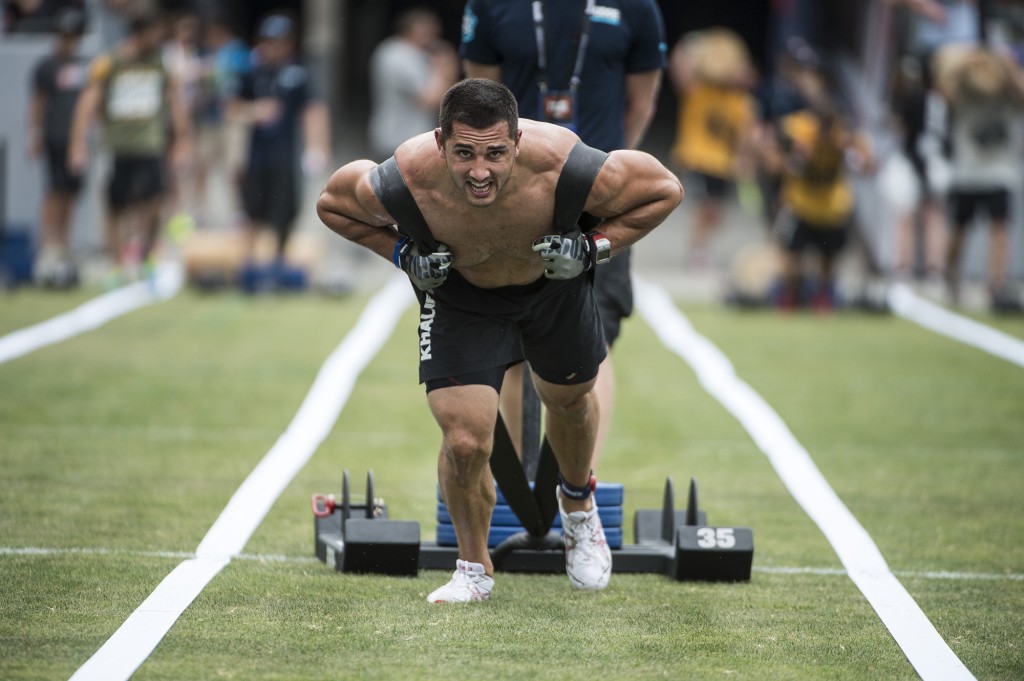Can CrossFit improve our pain tolerance?
Pain tolerance is basically one’s ability to suffer. However, as a construct, it encompasses both a physical and psychological component. In sports, more specifically, the ability to tolerate pain is said to have more to do with mental endurance. Therefore, pain tolerance also considers the «affective–motivational aspect of pain» (in Geva & Defrin, 2013).
The whole point of this article is to further describe the concept of pain tolerance: where does it come from? Can it be improved? Is it true that the mind gives up before the body?
Conceptualizing pain tolerance
When we’re in pain, our brain receives sensorial information that determines the level of pain but it doesn’t stop there. Attentional resources, appraisal processing and coping strategies will be used to modulate this sensation; that’s what makes it such a “complex psychobiological phenomenon” (Bandura et. al, 1987).
In the physical realm, this is how it works: when we exercise, we’re applying a stressful stimulus to the body, so the ability to continue to perform while in pain will determine our ability to adapt to the stressor, allowing compensation mechanisms. But what happens when pain is intense and we’re forced to decide whether or not to continue?
This is when it gets interesting because pain appraisal is a subjective process in the sense that we perceive and judge pain based on our individual differences. Our pain threshold varies from one to the next, but it catches up to all of us in the end. Some seem to shy away from it and others just run towards it.
How can pain tolerance be influenced?
Given the physical and psychological components underlying pain tolerance as a construct, two bodies of investigation have tried to answer this question: one considers the effects of physical stress on the body and its adaptive capacity; and the other, looks into the relationship between pain tolerance and other psychological attributes.
From a physical standpoint, the literature suggests that pain during exercise could enhance adaptive capacity and performance (in Geva & Defrin, 2013). Also, if we consider habituation processes, athletes could adapt to the intensity, frequency and duration of intense physical exercise if there’s a prolonged exposure.
Your mind will give up a thousand times before your body does
Psychological attributes can push our threshold just a little bit further. Many authors have tried to explain the relationship between certain psychological variables and pain tolerance. Bandura et. al (1987) found that perceived self-efficacy was directly related to pain tolerance and that it could be trained using cognitive control strategies.
James & Hardardottir (2002) studied the mediating effects of attentional focus and trait anxiety on pain tolerance. Their explanation was that “trait anxiety increased attentiveness to possible environmental threats”, therefore focus was placed on painful stimuli. They found that low-anxiety individuals exhibited higher pain tolerance than high-anxiety individuals.
More recently, Geva & Defrin (2013) found decreased pain ratings, increased pain tolerance in triathletes an ironman athletes. But they also included an interesting variable: fear of pain, which was lower in these athletes.
What came first: the chicken or the egg?

Geva & Defrin posed an honest question (2013) when investigating pain tolerance in triathletes: do they persist in their sport due to innate qualities or does their constant engagement in extreme physical and emotional efforts improve these qualities over time?
And I say it’s honest because when we look at CrossFit, it would seem that those who get hooked, already have a decent level of pain tolerance. It’s almost like CrossFit chooses us singlehandedly and by constantly being exposed to painful events (our lovely “workout of the day”), we push the limits an inch further every day.
Also, our ability to endure suffering seems to transcend the walls of the gym and permeate our perceived coping efficacy in general. It feels as if, surviving daily CrossFit metcons provides you with the mental tools to endure any situation.
In any case and to sum it all up, pain tolerance is related to:
- lower trait anxiety
- improved attentional control
- high perceived self-efficacy
- lower fear of pain
However, it can get better with cognitive control strategies and prolonged exposure to extreme physical exercise (does CrossFit ring a bell?); so, don’t shy away from pain, push against it!
- Bandura, A., O'Leary, A., Taylor, C. B., Gauthier, J., & Gossard, D. (1987). Perceived self-efficacy and pain control: opioid and nonopioid mechanisms. Journal of personality and social psychology, 53(3), 563. - Geva, N., & Defrin, R. (2013). Enhanced pain modulation among triathletes: a possible explanation for their exceptional capabilities. PAIN®, 154(11), 2317-2323. - James, J. E., & Hardardottir, D. (2002). Influence of attention focus and trait anxiety on tolerance of acute pain. British journal of health psychology, 7(2), 149-162. - O’Leary, T. J., Collett, J., Howells, K., & Morris, M. G. (2017). High but not moderate-intensity endurance training increases pain tolerance: a randomised trial. European journal of applied physiology, 117(11), 2201-2210.

